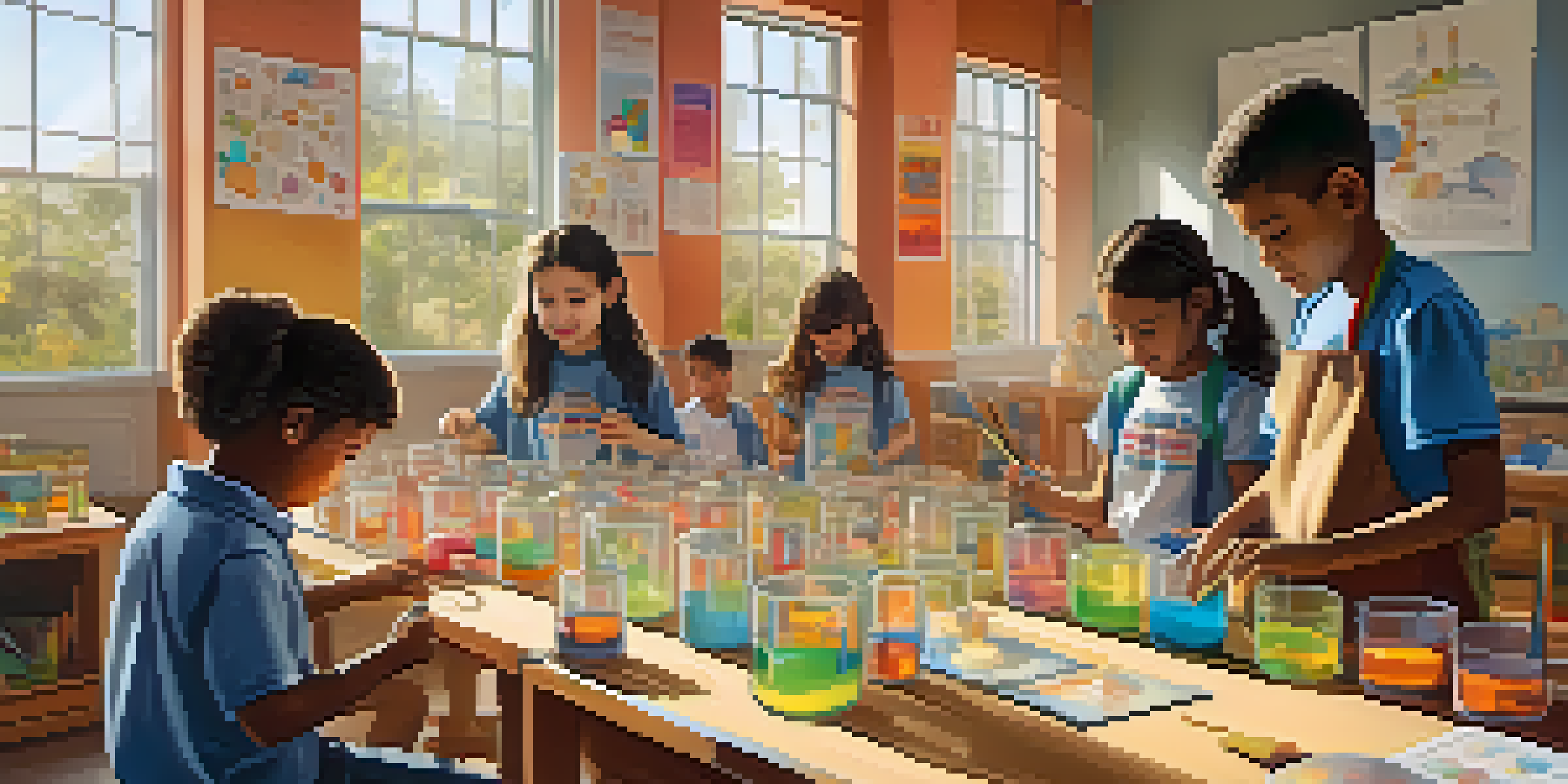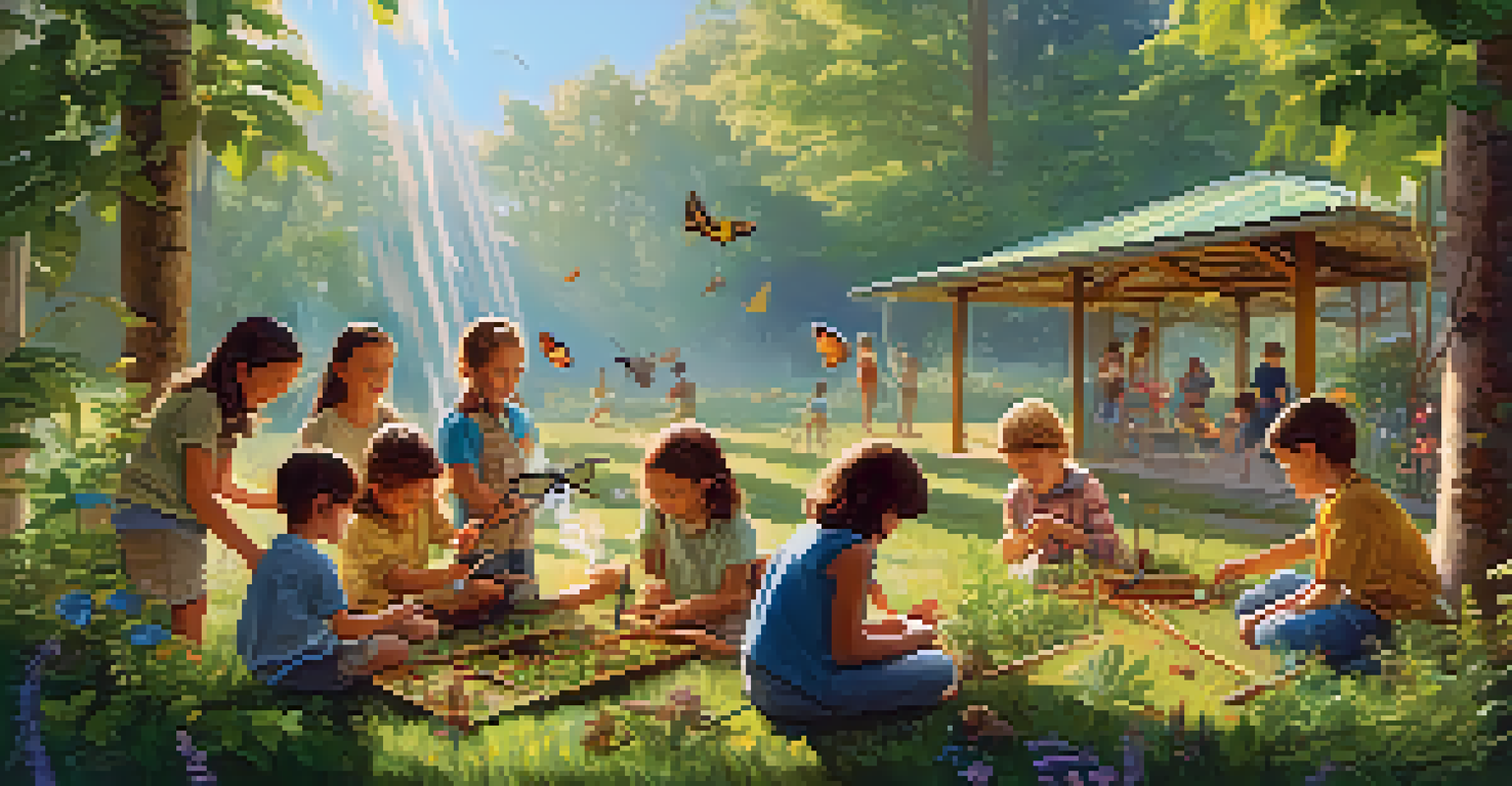The Importance of Play in STEAM Learning

Understanding STEAM: The Blend of Learning and Creativity
STEAM stands for Science, Technology, Engineering, Arts, and Mathematics. It’s a holistic approach to education that encourages students to think critically and creatively. The integration of arts into traditional STEM subjects helps students see the interconnectedness of knowledge, making learning more engaging.
Play is the highest form of research.
By blending these disciplines, educators create a more dynamic environment where students can explore ideas and solve problems. This is where play comes in—acting as a bridge between structured learning and creative exploration. When students play, they naturally experiment, innovate, and learn from their mistakes.
Incorporating play into STEAM education not only enhances understanding but also fosters a love for learning that can last a lifetime. It allows students to approach challenges with curiosity and an open mind, essential traits for future innovators.
The Benefits of Play in STEAM Education
Play offers numerous benefits in the context of STEAM learning, both cognitively and socially. It encourages problem-solving skills, critical thinking, and collaboration among peers. Through play, students learn to communicate their ideas and work together to achieve common goals.

When students engage in play, they are more likely to take risks and think outside the box. This freedom to explore without fear of failure fosters creativity, a key component of STEAM education. For example, building a model or conducting an experiment can be both fun and educational, allowing for hands-on learning experiences.
Play Enhances STEAM Learning
Incorporating play in STEAM education fosters creativity, critical thinking, and problem-solving skills.
Moreover, play helps to reduce anxiety and stress, creating a positive learning environment. When students feel comfortable and are having fun, they are more likely to engage deeply with the material and retain information.
Play-Based Learning: Real-World Applications
Play-based learning is not just limited to the classroom; it can be integrated into everyday life. For instance, using household items to create simple machines teaches engineering concepts through play. This experiential learning approach helps students understand complex ideas in a tangible way.
The greatest gift you can give your children is the ability to learn how to learn.
Activities like coding games or interactive science experiments allow students to apply theoretical knowledge in practical settings. These activities demonstrate how concepts in STEAM can be relevant to their lives, enhancing engagement and motivation.
By encouraging play outside the classroom, educators can provide students with opportunities to explore their interests. This type of learning encourages curiosity and self-directed exploration, essential for lifelong learning.
The Role of Educators in Facilitating Play
Teachers play a pivotal role in integrating play into STEAM learning. They can design lessons that incorporate playful elements, making the learning process more enjoyable. By creating a supportive environment, educators can encourage students to explore and express their creativity.
It’s essential for educators to understand the balance between structured learning and free play. This means allowing students to take the lead in their exploration while providing guidance when needed. By doing so, teachers can help students develop independence and confidence in their abilities.
Educators' Role in Play Integration
Teachers can facilitate play-based learning by creating supportive environments and balancing structure with exploration.
Professional development for educators can also focus on the importance of play in teaching strategies. Workshops and training can equip teachers with new ideas and techniques to make learning more interactive and engaging.
Parents and Play: Supporting STEAM Learning at Home
Parents can significantly influence their children's STEAM learning by fostering a playful environment at home. Encouraging activities like building with blocks, conducting simple experiments, or engaging in arts and crafts can spark interest in these subjects. This hands-on approach nurtures creativity and critical thinking.
Additionally, parents can provide resources such as books, games, and online platforms that promote STEAM learning through play. By choosing materials that emphasize exploration and creativity, they can support their child's natural curiosity and desire to learn.
It's also important for parents to model a playful attitude toward learning. When children see their parents engaging in fun, educational activities, they are more likely to adopt a similar mindset and approach their own learning with enthusiasm.
Challenges in Implementing Play in STEAM Education
Despite its benefits, there are challenges in implementing play within STEAM education. Some educators may feel pressured to adhere strictly to standardized curricula, leaving little room for play. This can create a learning environment that prioritizes rote memorization over creativity and exploration.
There may also be misconceptions about the value of play. Some educators, parents, or administrators might view play as frivolous or unrelated to serious learning. Overcoming these attitudes requires advocacy and education about the profound impacts of play on cognitive and social development.
Parents Promote Play at Home
Parents can support STEAM learning by encouraging playful activities that spark curiosity and creativity.
Finding a balance between structured learning and playful exploration can be difficult, but it is essential. Establishing a culture that values play as a legitimate form of learning is crucial for fostering an environment where students can thrive.
Future Trends: Play in STEAM Education
As education continues to evolve, the role of play in STEAM learning is gaining recognition. Innovative educational technologies, such as virtual reality and interactive simulations, provide new opportunities for playful learning experiences. These tools can make complex concepts more accessible and engaging for students.
Moreover, there is a growing emphasis on interdisciplinary learning, where subjects are no longer taught in isolation. This trend aligns perfectly with the playful approach of STEAM education, as it encourages students to make connections across different fields.

Looking ahead, fostering a culture that embraces play in education will be vital. This shift can lead to a generation of learners who are not only knowledgeable but also innovative and adaptable, ready to tackle the challenges of the future.